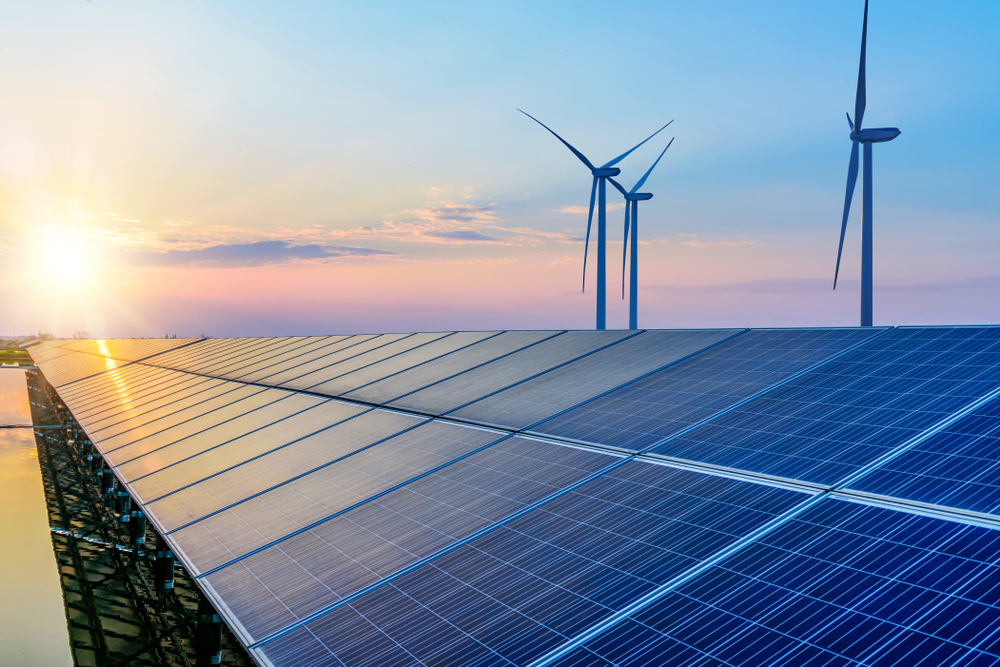
Disasters do not respect any geographical borders; science and technology are the driving forces of the world, and delay is deadly as we know from the ongoing COVID-19 crisis. The increase in the crisis has resulted in unseen levels of inequality, environmental degradation, economic uncertainty, and public health threats, therefore, questioning our existing policies and plans and coaxing us to be prompt in taking measures to build greater resilience.
As the International Monetary Fund (IMF) gears up to lend around $ 1 trillion to governments hit by the pandemic, the IMF is giving guidance to tackle climate change: "We are about to deploy enormous, gigantic fiscal stimulus and we can do it in a way that we tackle both crises at the same time. If our world is to come out of this [coronavirus] crisis more resilient, we must do everything in our power to make it a green recovery”, said IMF Director Ms. Kristalina Georgieva.
To have any hope of slowing environmental degradation and, ultimately, reversing it, will require some game-changing technological breakthroughs. Strong policies promoting clean energy technological solutions with efficient stimulus measures are essential to driving strong actions against climate change. The actions need to be consistent with and supportive of the existing long-term decarbonization targets and strategies of the government’s Nationally Determined Contribution and National Action Plan for Climate Change.
The following sectors and technology intervention areas can be focused on to address climate change and are also consistent with the NAPCC, National Missions and implementing ministries are:
1. Energy supply: This sector contributes 53 per cent to India’s total GHG emissions (2015).
Technology interventions in renewable energy, energy storage, grid optimization, distribution and metering, and waste-to-energy will enhance Indian energy policies, improve access, ensure affordability of modern energy resources for all Indians, diversify energy resources. The Ministries and National Missions that play an integral role in driving this are Ministry of New and Renewable Energy, Ministry of Power, National Solar Mission, National Mission for Enhanced Energy Efficiency, State Action Plan for Climate Change (SAPCC).
2. Agriculture and allied sectors: About 49 per cent of India’s population is dependent on agriculture and allied activities for livelihood. The sector is responsible for 11 per cent of the total GHG emissions in India. Our focus should be to transition to resource-efficient modern agricultural practices through technological interventions in areas such as sustainable farming, cropland management, animal husbandry and fisheries, water conservation and harvesting, food processing and genetically modified crops. The Ministries and National Missions that play an integral role are Ministry of Agriculture and Farmers Welfare, Ministry of Animal Husbandry, Dairying and Fisheries, Ministry of Jal Shakti, Ministry of Food Processing Industries, National Mission for Sustaining the Himalayan Ecosystem, National Mission for a Green India, National Mission for Sustainable Agriculture and SAPCC.
3. Infrastructure, buildings, and industry: This sector is responsible for 27 per cent of the country’s gross GHG emissions. We must move towards the highest environmental standards in the Infrastructure sector through technology interventions in areas such as emissions reduction and filtering, building management (energy efficiency retrofits), oil, gas and water pipelines, process improvements, waste-to-infrastructure, green transport infrastructure, spatial planning. The Ministries and National Missions that play an integral role are Ministry of Environment, Forest and Climate Change, Ministry of Housing and Urban Affairs, Ministry of Petroleum and Natural Gas, Ministry of Power, Ministry of Road Transport and Highways, Ministry of Electronics and Information Technology, National Mission on Sustainable Habitat, SAPCC, Atal Mission for Rejuvenation & Urban Transformation (AMRUT) – for Smart Cities and Pradhan Mantri Ujjwala Yojana.
4. Transport: The transport sector is responsible for 7 per cent of Indian GHG emissions. The current actions towards clean fuel alternatives can be accelerated through technology interventions in areas such as electric mobility, bio-fuels, logistics and supply chain management and the driving forces behind these actions are Ministry of Power, Ministry of New and Renewable Energy, Ministry of Civil Aviation, Ministry of Railways, Ministry of Road Transport and Highways, SAPCC and National Electric Mobility Mission Plan (NEMMP) 2020.
5. Waste: The waste sector contributed 5 per cent to India’s GHG emissions. India needs to reform its waste disposal and management practices. Further, water consumption needs to be optimized in the country through technological intervention for plastic alternatives, development, and expansion of recycling systems, waste processing and alignment with action plans of the Ministry of Environment, Forests and Climate Change, National Water Mission, SAPCC and the Swachh Bharat Mission.
We were deplorably under-prepared for this pandemic and it makes absolute economic sense to build greater resilience against climate change now, just as health care needs to be better prepared for the next pandemic.
We hope that technological revolution will be the torchbearer of change and will enable India to transition investments to green sectors, create new green jobs, help accelerate the implementation of technology policies and catalyze actions to achieve both Paris Agreement and Sustainable Development Goals to take a leadership role in global efforts to combat climate change through technological innovation, leading to a sustainable future for all.
#Covid_19



